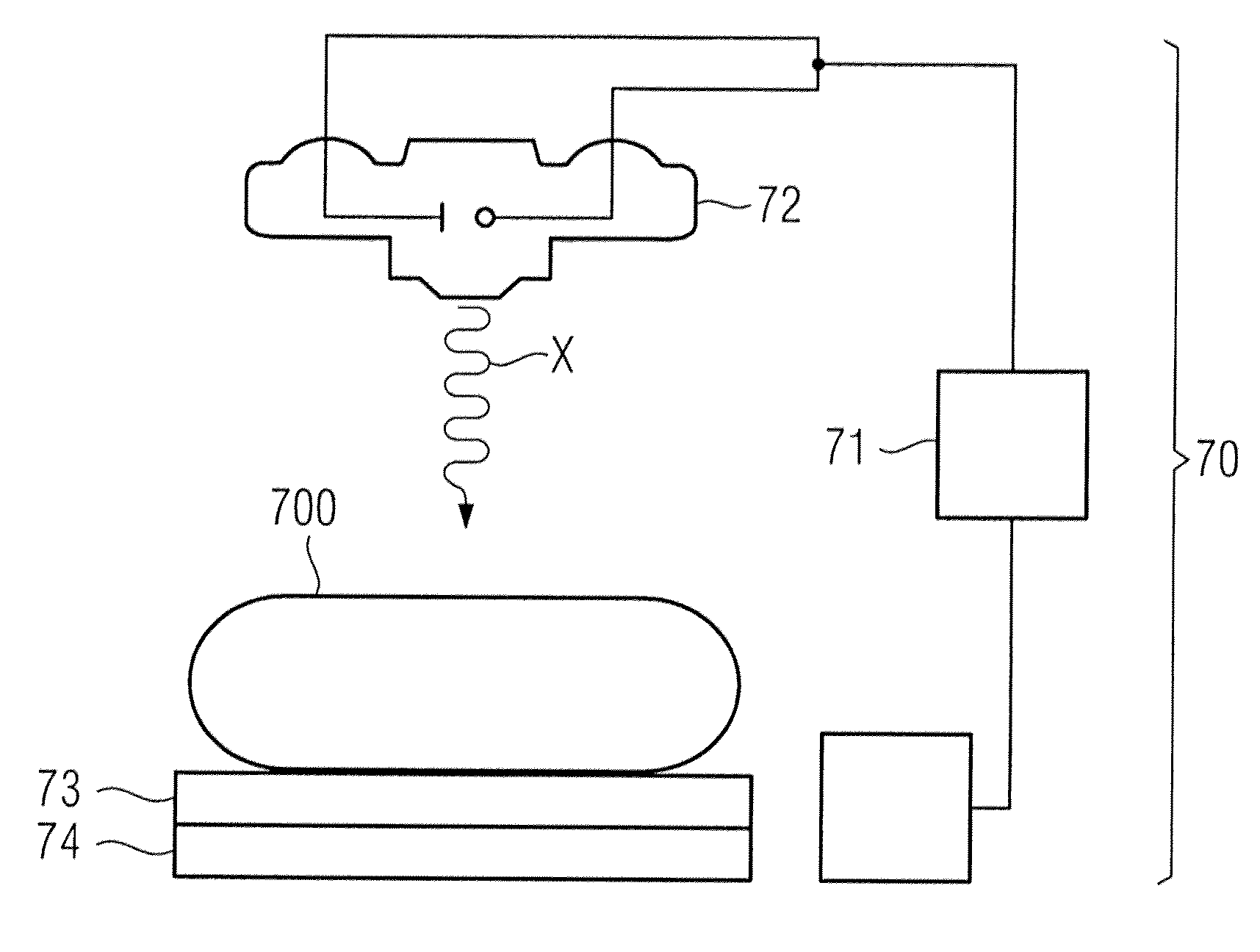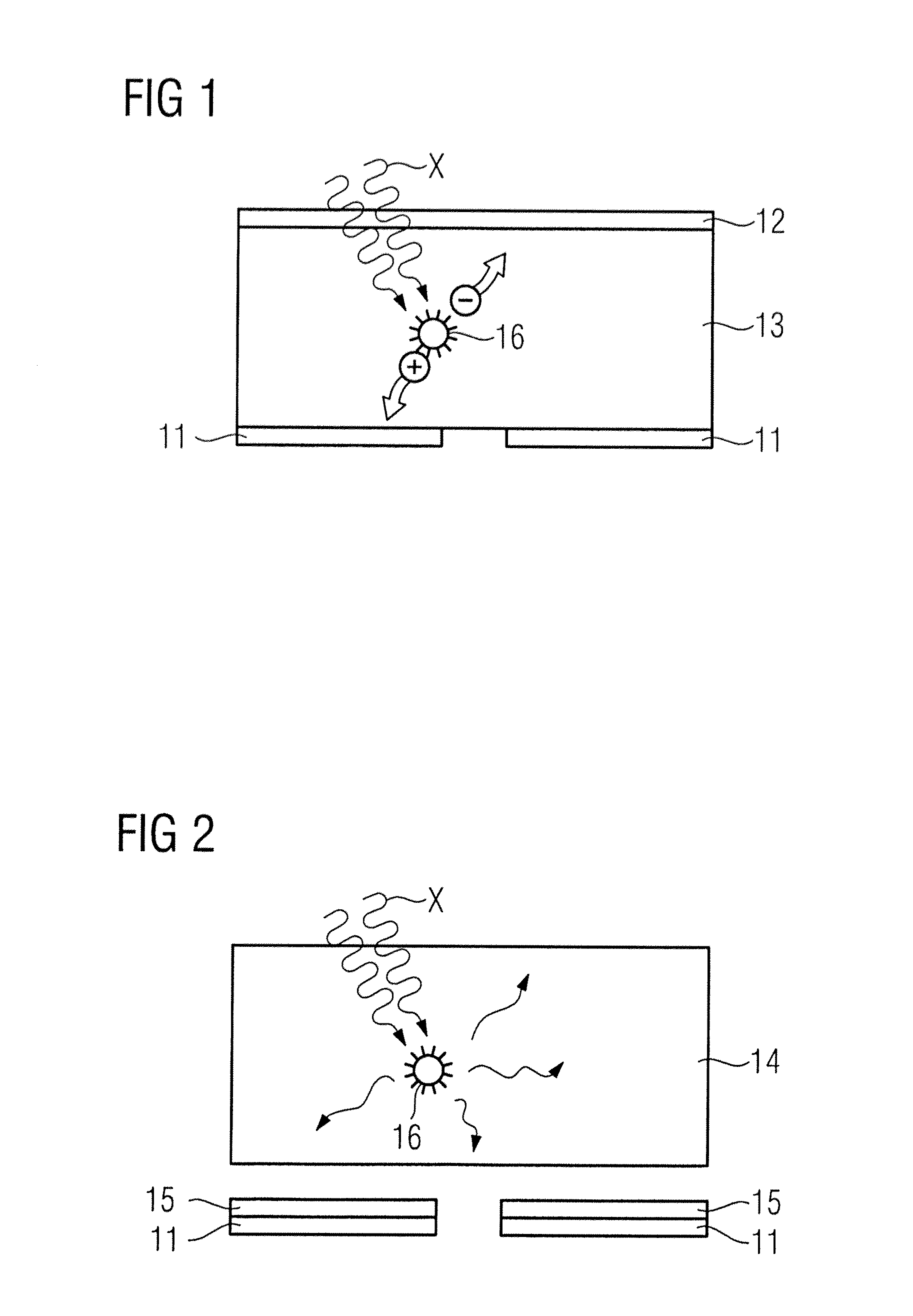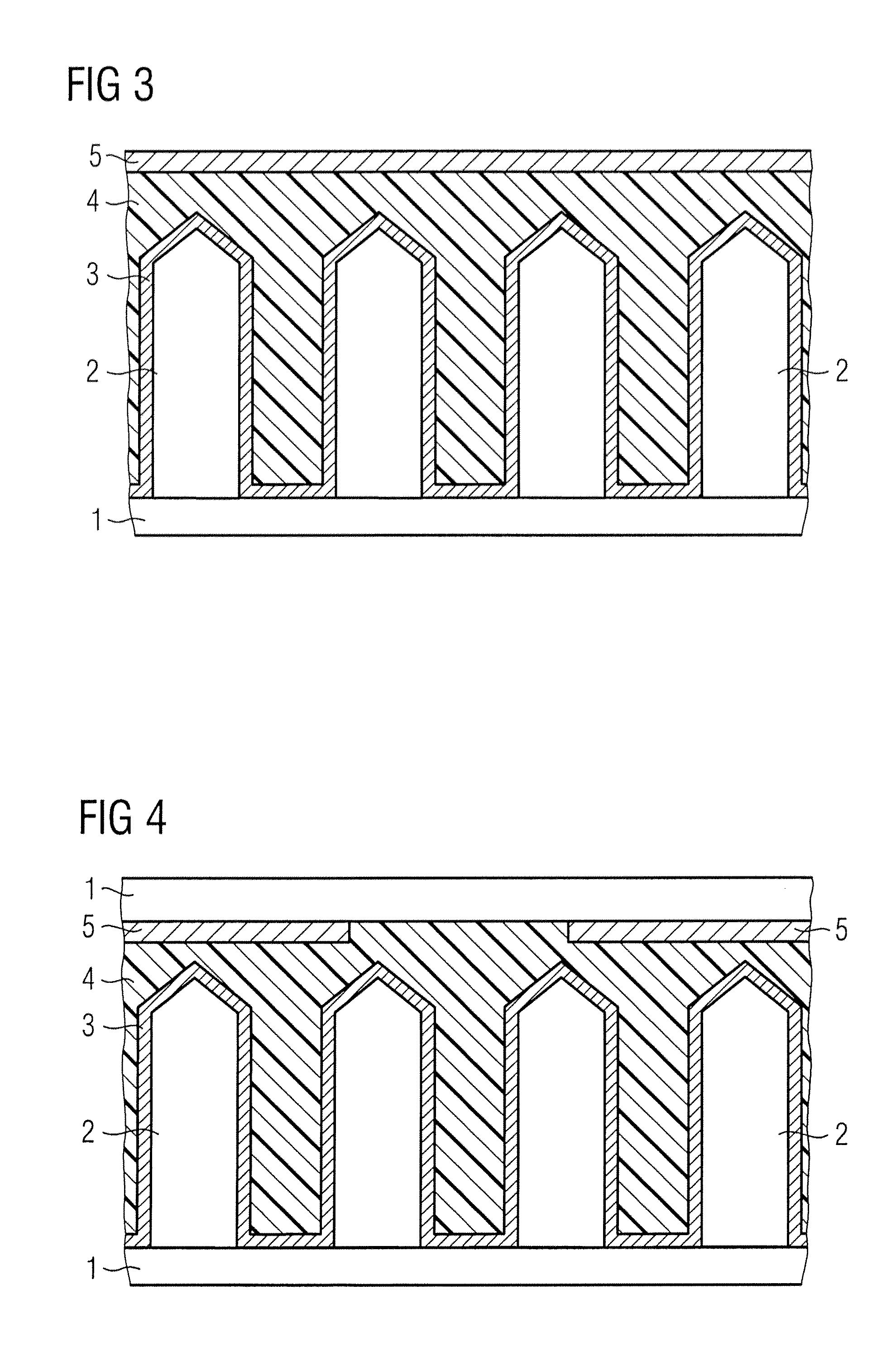Hybrid organic photodiode
- Summary
- Abstract
- Description
- Claims
- Application Information
AI Technical Summary
Benefits of technology
Problems solved by technology
Method used
Image
Examples
Embodiment Construction
[0052]FIG. 1 shows an x-ray detector for direct x-ray conversion according to the known prior art. A material 13 that is suitable for absorption and direct conversion of x-ray radiation X is arranged between a pixel electrode 11 and a top electrode 12. The pixelation of the electrode 11 is produced for spatial resolution. The top electrode 12 is permeable to x-ray radiation X. The x-ray radiation X is absorbed in the material 13 to form an electron-hole pairs. In FIG. 1, the conversion center 16 is schematically shown in which the transduction of the radiation energy of the x-ray radiation X into electrical energy takes place in that the energy of the radiation is transferred to an electron and this is raised to a higher energetic state. The electron-hole pair that is formed in such a manner can be separated in an applied field that can be applied to the material layer 13 via the electrodes 11, 12. This means that the x-ray detector operates under a bias voltage and can detect a cur...
PUM
| Property | Measurement | Unit |
|---|---|---|
| Thickness | aaaaa | aaaaa |
| Thickness | aaaaa | aaaaa |
| Percent by volume | aaaaa | aaaaa |
Abstract
Description
Claims
Application Information
 Login to View More
Login to View More - R&D
- Intellectual Property
- Life Sciences
- Materials
- Tech Scout
- Unparalleled Data Quality
- Higher Quality Content
- 60% Fewer Hallucinations
Browse by: Latest US Patents, China's latest patents, Technical Efficacy Thesaurus, Application Domain, Technology Topic, Popular Technical Reports.
© 2025 PatSnap. All rights reserved.Legal|Privacy policy|Modern Slavery Act Transparency Statement|Sitemap|About US| Contact US: help@patsnap.com



